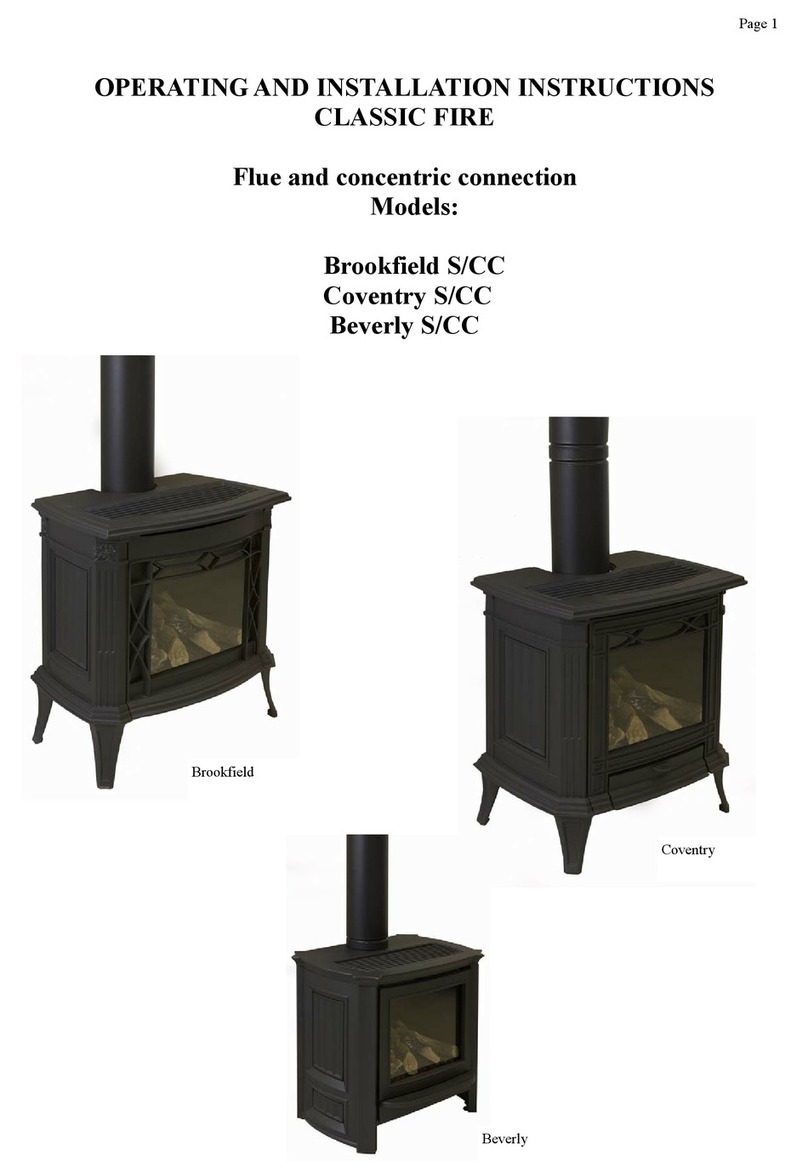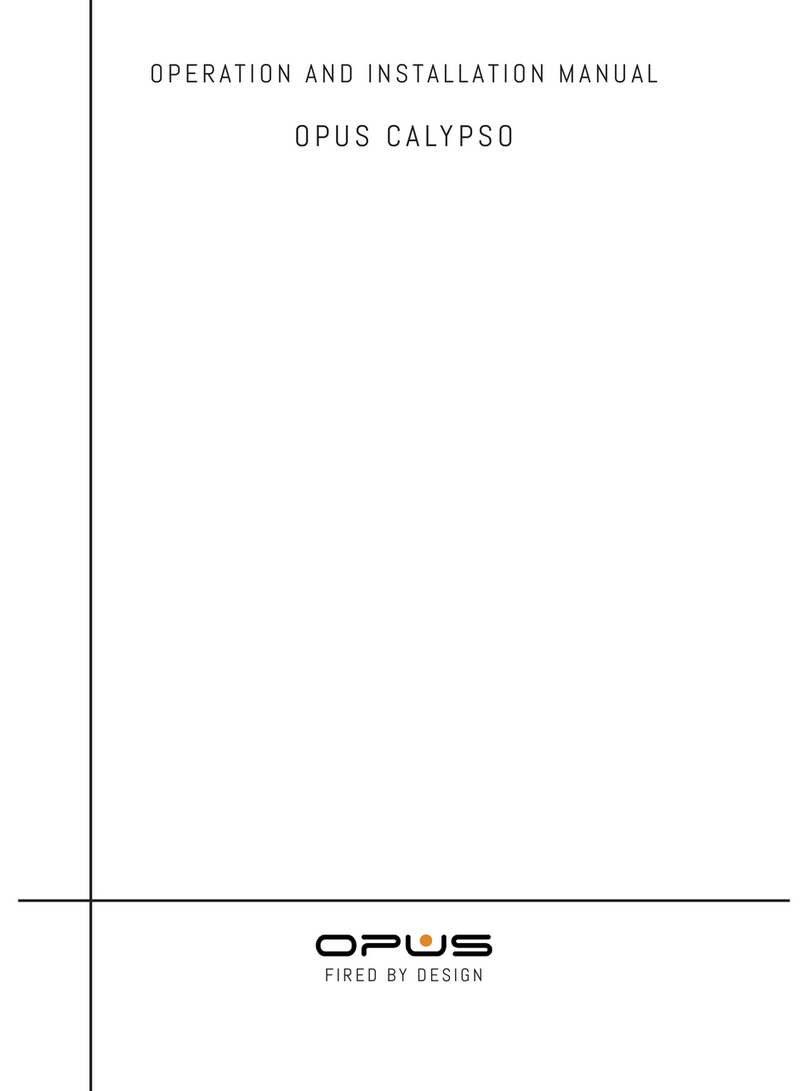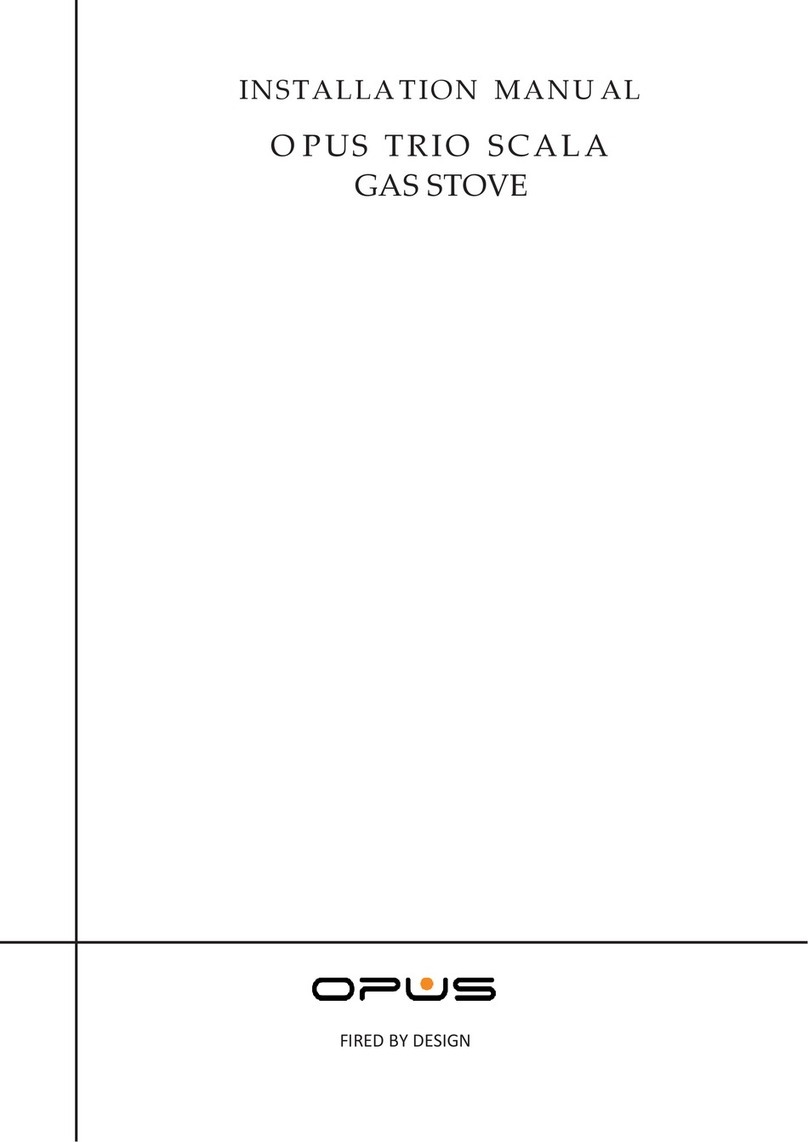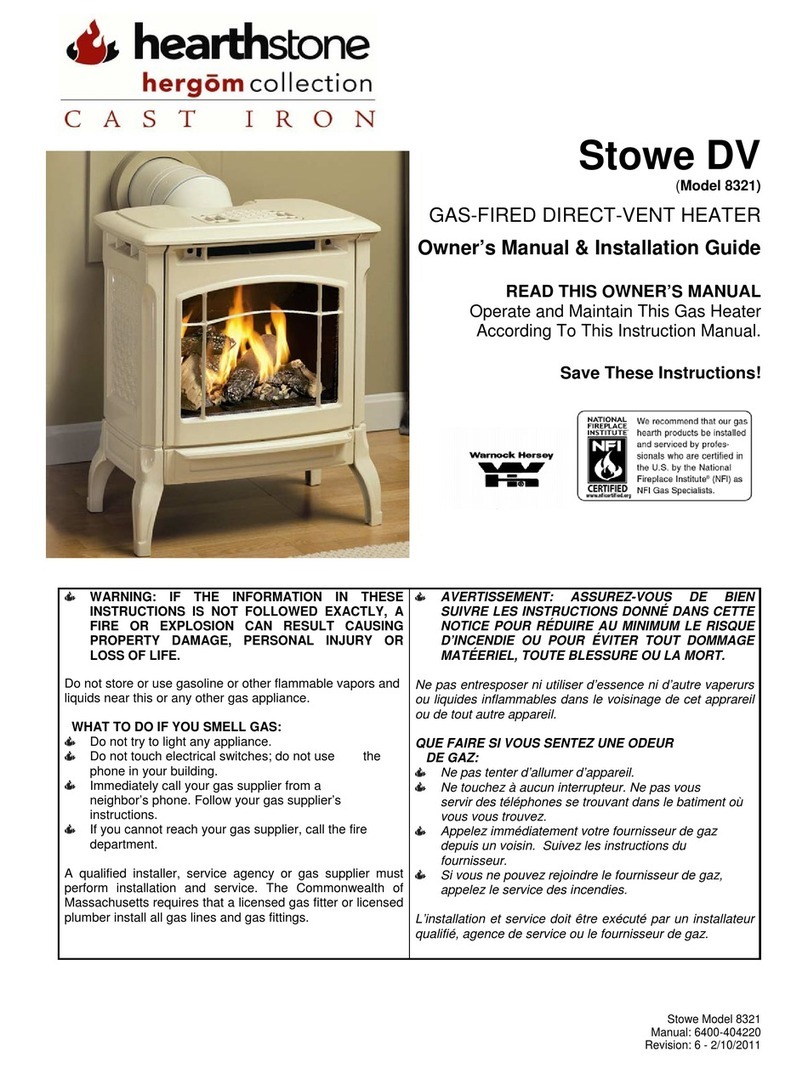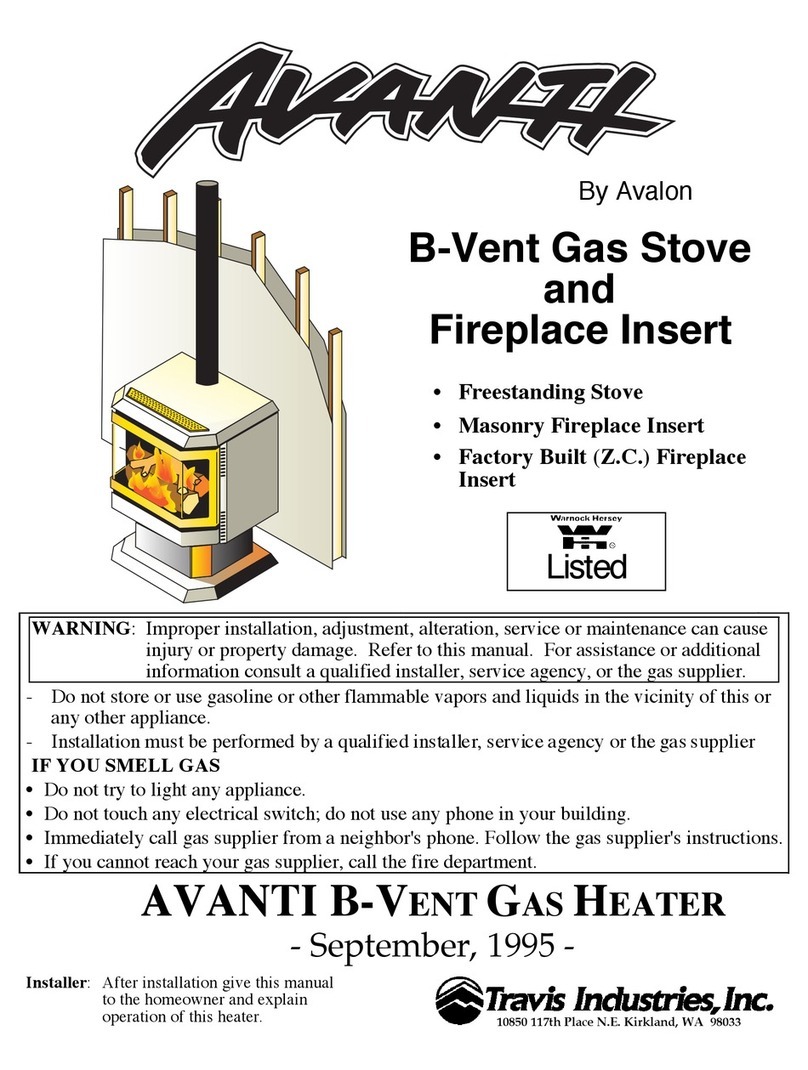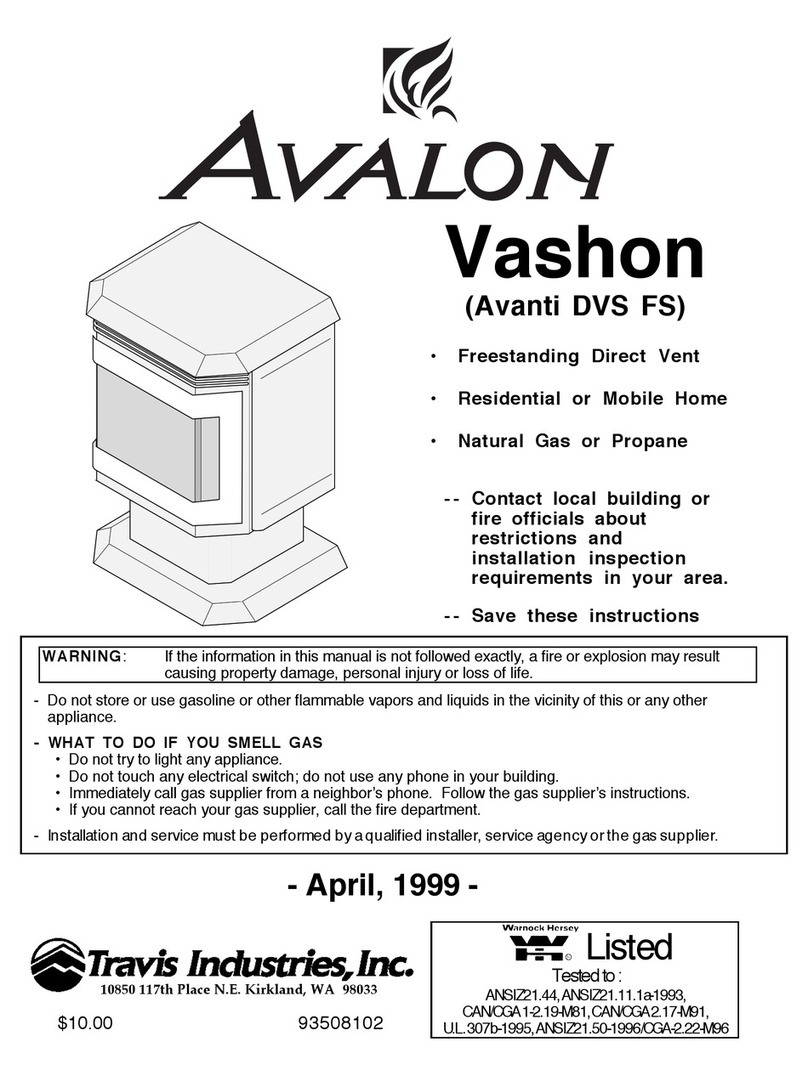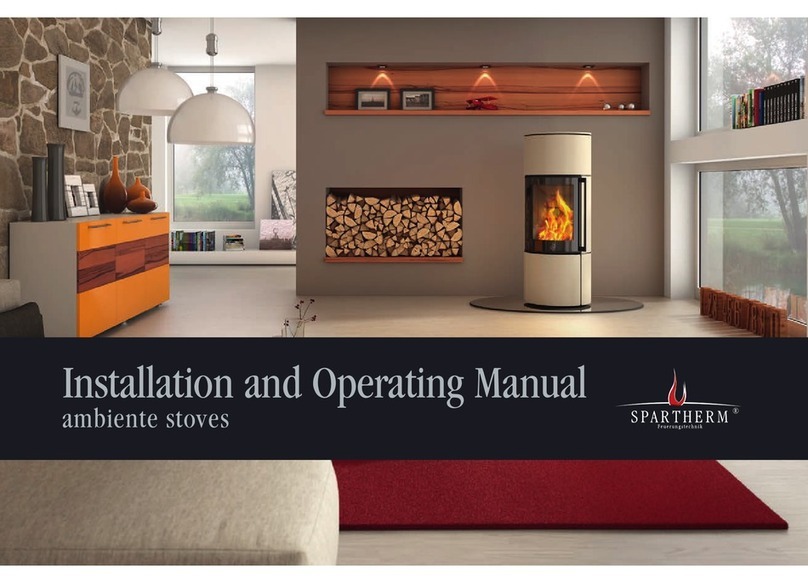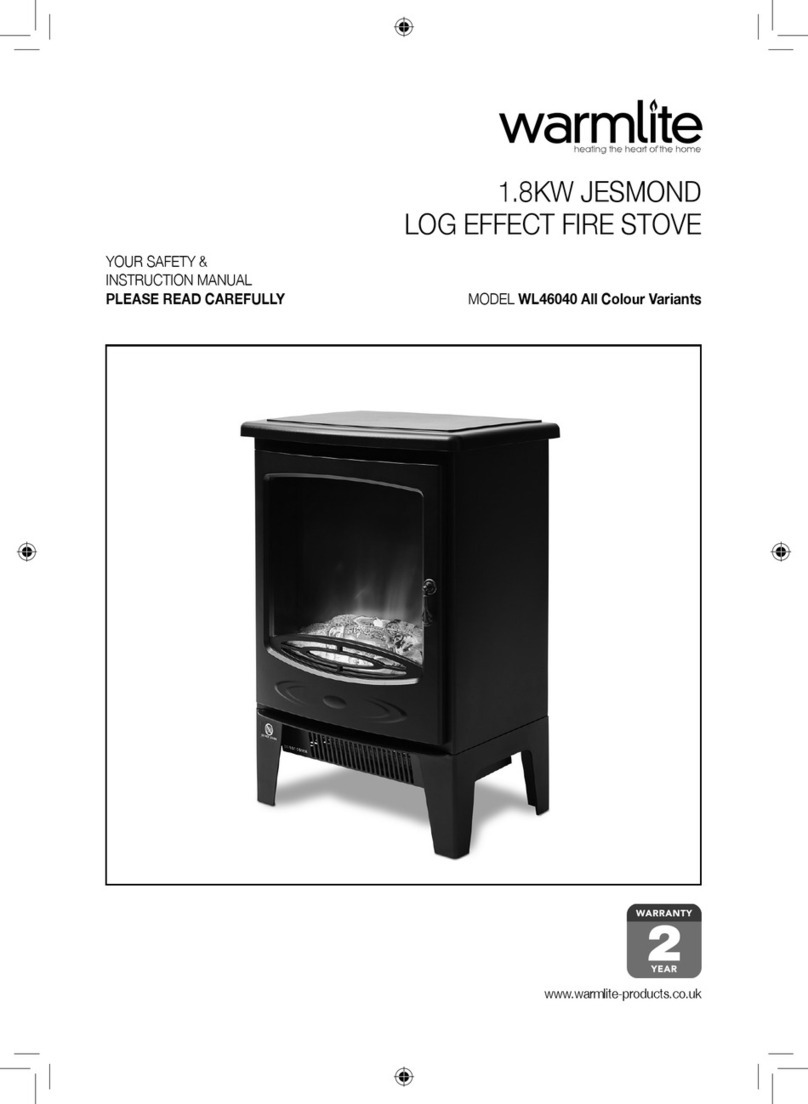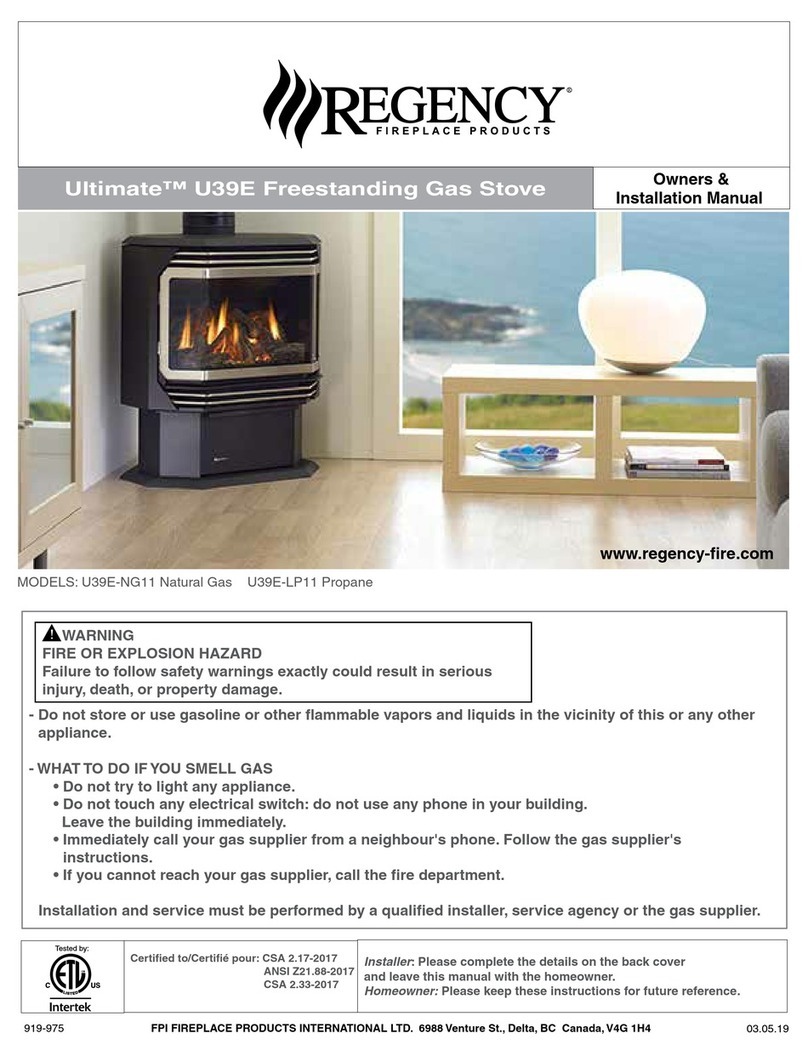
7
5. General information about the working of the stove
Always use a glove
Do not use any flammable liquid fluids for lighting the fire. The door of the firebox should
be opened only when adding fuel, apart from leaving the door slightly ajar during the
lighting phase.
Use only suitable fuels (see section 5.2.).
Check that there is enough fresh air coming into the room. Stoves should only be used by
adults. All parts of the appliance, especially the external surfaces will be hot to touch when
in operation and due care will need to be taken. Make sure that children are never alone
near the stove. Never leave the stove for a long period of time without surveillance.
The stove should be used only according to the instructions in this manual.
The stove has been built with a self closing door mechanism. This can be disabled by
removing the spring from the door hinge
5.1. Starting the stove
Please pay attention to the minimum space between the stove and flammable objects
when lighting a fire
Above the ashpan there is a fuel selector lever, slide this to the left when burning wood
logs, slide it to the right when burning multi fuel.
1. Primary and secondary controls should be fully open.
If the flue pipe has a flue damper it should also be fully open.
2. Remove enough ash from the grate to let air through but leave some of the ash there.
Put 2-3 firelighters in the centre of the firebox and put on the firewood.
3. Light the firelighters and leave the door slightly open as it prevents condensation on the
cold glass. Do not leave the stove unattended when the door is ajar.
4. After approximately 5 to 10 minutes, when the fire is burning fully, carefully open the
door, put 1 to 2 pieces of the wood into the firebox, and then close the door.
5. When all the fuel is properly burning, and the working temperature of the stove is
achieved (after approximately 20-30 minutes), gradually move the primary air regulator
backwards, but ensure that there is still a visible flame.
When the stove is up to temperature and the fire burning well then the primary regulator
can be completely closed.


